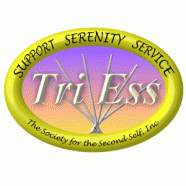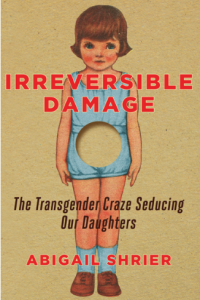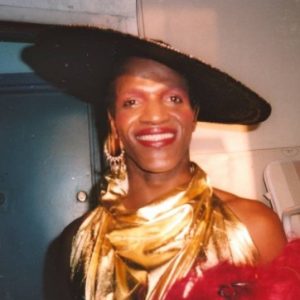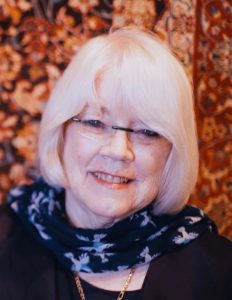Is There a Transgender Movement?
Is there a transgender movement? Yes, there are five of them.
Writers and pundits, who do not accept being transgender, often refer to “The Transgender Movement” as if there were some singular evil boogeyman cult. The history and facts indicate that there are five transgender movements which were organically generated by transgender people. Although a current host of advocacy organizations claim credit for obtaining transgender civil rights, the transgender people in these movements have actually provided the motive power. Many of these organizations are only interested in monetary contributions and political power, not in the welfare of transgender people.
In historical order, the five transgender movements that I have identified are (in historical order) :
- Male to Female Transsexuals
- Crossdressers
- Indigent Street Transgender People
- Female to Male Transsexuals
- Religious Recovery Movements
I will describe each of them briefly and then sketch out reasons that sometimes keep them apart.
Male-to-Female Transsexuals
Although, in history, there were people classed as eccentric for crossdressing and societies which had non-binary gender categories, the idea of being transgender did not really begin until the dawn of the 20th Century. The idea of being transgender is that there are some people who are motivated not to follow the gender behavior category they were assigned at birth according to cultural rules. This means that they have to be cultural outlaws. Of course, the word “transgender” was not defined until the 1960s. But the numerous people so motivated that they wanted to change their sex in the early decades of the 20th Century made scientists realize that being transgender was not just a one-off, but a real phenomenon. These were the male-to-female transsexuals.
 You have probably read about the early transsexuals or seen The Danish Girl or at least heard of Christine Jorgenson. The recognition of transgender people by the early sexologists was continued by the German sexologists and endocrinologists Magnus Hirschfeld and Harry Benjamin. Although Hirschfeld was gay, neither of them were transgender. Both were medical doctors. Initially Hirshfeld thought that being transgender was a fetish but later came to believe that this was not so. After World War II, Harry Benjamin provided hormone therapy and found surgeons willing to violate the law, in some cases, to conduct transsexual genital plastic surgeries (TGPS). Providers that came after Benjamin formed the Harry Benjamin International Gender Dysphoria Association (HBIGDA). HBIGDA was renamed as the World Professional Association for Transgender Health (WPATH) and proliferated into correspondent geographical organizations including the USPATH which included providers in the United States which are the vast majority. Although today this organization does do some advocacy for transsexual people and although there are some transgender people involved in the leadership, the primary goal of the organization is to advance and fund transsexual treatment. A recent interview with 60 Minutes indicates how naive these providers are in providing media leadership. (You can only see this video segment if you sign up for seven free days of Paramount+). I know these providers personally through WPATH and USPATH and my stint on the USPATH Board. They are expert at what they do as providers but have not been trained to be public leaders.
You have probably read about the early transsexuals or seen The Danish Girl or at least heard of Christine Jorgenson. The recognition of transgender people by the early sexologists was continued by the German sexologists and endocrinologists Magnus Hirschfeld and Harry Benjamin. Although Hirschfeld was gay, neither of them were transgender. Both were medical doctors. Initially Hirshfeld thought that being transgender was a fetish but later came to believe that this was not so. After World War II, Harry Benjamin provided hormone therapy and found surgeons willing to violate the law, in some cases, to conduct transsexual genital plastic surgeries (TGPS). Providers that came after Benjamin formed the Harry Benjamin International Gender Dysphoria Association (HBIGDA). HBIGDA was renamed as the World Professional Association for Transgender Health (WPATH) and proliferated into correspondent geographical organizations including the USPATH which included providers in the United States which are the vast majority. Although today this organization does do some advocacy for transsexual people and although there are some transgender people involved in the leadership, the primary goal of the organization is to advance and fund transsexual treatment. A recent interview with 60 Minutes indicates how naive these providers are in providing media leadership. (You can only see this video segment if you sign up for seven free days of Paramount+). I know these providers personally through WPATH and USPATH and my stint on the USPATH Board. They are expert at what they do as providers but have not been trained to be public leaders.
The important point here is that transsexual people conceived of the idea of being transgender themselves, and sought help to live authentic lives. Hirschfeld and Benjamin did not invent being transgender, the idea was already existent.
Crossdressers
By far the largest group of transgender people are “Crossdressers”. The word “crossdressing” in its broadest context can include those who do it as theater (e.g. drag queens) or those who do it for political mockery or for those who wanted to practice a previously male-dominated vocation (e.g. military). However, the “Crossdressers” are motivated to crossdress to feel relaxed and authentic even for just one night every month or so. Most of them are still in the closet and keep their transgender behavior a secret from family and job. Peer-led support groups were founded in the 1970s for education and social reasons. The main message of these groups was that individual crossdressers were not alone and that their behavior was not pathological.
Of the 2-3 million transgender people in the United States, I can only account for maybe 400,000 transsexuals and only a small percentage of them actually get TGPS and other transition procedures This estimate is based by projecting Lynn Conway’s estimates which were made in the early 2000s. This leaves a large segment of transgender people who behave as Crossdressers.
 Although many Crossdressers take hormones and some go full time, many adamantly proclaim that they are not “transgender.” This was true for Virginia Prince, the most prominent founder of “Crossdresser” support groups who took hormones. In 1972, she and Carol Beecroft formed the Society for the Second Self or Tri-Ess as a support group for heterosexual, married, transition-denying male crossdressers. Groups with less restrictive membership followed.
Although many Crossdressers take hormones and some go full time, many adamantly proclaim that they are not “transgender.” This was true for Virginia Prince, the most prominent founder of “Crossdresser” support groups who took hormones. In 1972, she and Carol Beecroft formed the Society for the Second Self or Tri-Ess as a support group for heterosexual, married, transition-denying male crossdressers. Groups with less restrictive membership followed.
I started out in the Detroit “Crossroads” group which was pansexual and accepting of the unmarried and transitioners. When I joined Crossroads, it was a “crossdressing” group but in a few years was relabeled a “transgender” group. These support groups spawned transgender “conventions”, some of which continue today although they are becoming less educational and more social. Despite the pandemic, peer-led support groups continue although the need for them has diminished because information on crossdressing is readily available on the Internet and because of greater public acceptance of transgender people.
Some in the Crossdresser Movement adamantly reject being transgender or transsexual, even though many of them take hormones and have surgeries and some go full time. They are fiercely independent and that is their prerogative in my mind. They have some legitimate gripes with the providers who service the MTF and FTM Transsexual Movements, mainly with WPATH. They have experienced problems with inept providers whom, they say, prematurely suggest transition and do not understand that Crossdressers want to keep their marriages intact. For a time, I tried to get WPATH to give Crossdresser issues more prominence. Like a good peacemaker, I even gave a paper at the last in-person USPATH meeting to get these two movements on the same page. I will not go into the gory details, but neither side was ready. I learned that peacemakers often fail.
Indigent
You are undoubtedly aware that transgender people participated in Stonewall in 1969 and similar riots starting with Cooper’s Donuts in 1959. Transgender people who participated in these protests were poor and forced into street economies of prostitution and crime. As today, many were thrown out into the street by families and communities because they were transgender. They were harassed by police in restaurants and bars, in part, because they were run by organized crime which paid protection money to the police. The police would roust their customers until the payoff money was adequate. Stonewall was a Mafia bar and it was significant that when the police came on repeated nights of the riot that the patrons threw pennies at them to symbolize police corruption.
After the 1960s riots, transgender people formed community organizations in major U.S. cities which provided services to the indigent. In New York City, Marsha P. Johnson was a prime organizer. Charitable and governmental funding from “The War on Poverty” and other programs became available.
The immoral rejection by family and community toward transgender people continues today. A large proportion of street kids, even as young as 9-11 years old are transgender and gay kids. Cities receive federal grants which are portioned out to various not-for-profit organizations including those for transgender housing and services. With particular respect to those with HIV. I participate in the local leadership of the Ryan White HIV services grant and a HOPWA grant for housing HIV positive people, many of whom are transgender. And there are many charitable organizations that provide services apart from government. The deficiency of many of these programs is that they only service transgender people who are in their late teens or adults, many young transgender kids are lucky if they last that long, given the street environment.
Female to Male Transsexuals
This movement started in the late 1980s, centered in San Francisco. Louis Sullivan, a FTM, had been writing newsletters to keep FTM informed and subsequently moved there from Wisconsin and found help from a psychologist named Lin Fraser. Sullivan published newsletters and formed organizations to keep FTM transsexuals informed.
Most providers for this group were already members of WPATH. Today, WPATH provides standards of care documents that cover both MTF and FTM. The most prominent senior leader is Jamison Green who is an author and legal expert. And Lin Fraser is still prominent with respect to WPATH courses to educate providers.
 In the last decade, the number of FTM transsexuals has grown rapidly. The main reason for this is that providers actually started treating transgender kids, as distinguished from pre-homosexual kids. Those born female are starting to realize that treatment is available and are playing catch-up to their MTF peers. We can now block puberty for both MTF and FTM teenage children which gives them more time to sort out which gender category they will follow in adulthood. This movement is not without pushback from some parents who have formed organizations which reject transgender treatment for their kids born female. Several yellow journalists, motivated by religious dogma have capitalized on this counter movement with publications that do not fairly treat transgender science regarding the increase in treatment of transgender teenagers. Among them are Abigail Shrier who wrote the book Irreversible Damage and Helen Joyce who just published the book TRANS this week.
In the last decade, the number of FTM transsexuals has grown rapidly. The main reason for this is that providers actually started treating transgender kids, as distinguished from pre-homosexual kids. Those born female are starting to realize that treatment is available and are playing catch-up to their MTF peers. We can now block puberty for both MTF and FTM teenage children which gives them more time to sort out which gender category they will follow in adulthood. This movement is not without pushback from some parents who have formed organizations which reject transgender treatment for their kids born female. Several yellow journalists, motivated by religious dogma have capitalized on this counter movement with publications that do not fairly treat transgender science regarding the increase in treatment of transgender teenagers. Among them are Abigail Shrier who wrote the book Irreversible Damage and Helen Joyce who just published the book TRANS this week.
Religious Recovery Movements
Organized religion is on the decline in America. This is partly due to mainstream intolerance and rejection of LGBT people. But the major religions have finally gotten the message that they need to reflect the popular tolerance and acceptance of LGBT people. Forty percent of U.S. adults now say that they know a transgender person. Many of these religious organizations have started movements to attract transgender people as members and leaders and to preach tolerance. Some of these movements were started by transgender people. For example, Erin Swenson, who is a Presbyterian minister, fought her expulsion from the pulpit. She did so by invoking Presbyterian theology. For a long time, Erin has led peer-support groups here in Atlanta. The Episcopal Church here in the United States has already broken away from the Anglican Church of England due to LGBT issues. It looks like the U.S. Methodist church will also break up because of these issues although some progress has been made in acceptance.
I was brought up in the Methodist Church but am currently disqualified from being a minister, the fact that I have not attended the seminary notwithstanding. But it is not because I am transgender but because I am a lesbian. (All of my teenage personality tests indicated that I should have become a minister or pastor but at that time I thought it was incompatible with being a scientist.)
The Catholic Pope has included “gender” theory along with nuclear arms and “genetic manipulation as being “destroyers of creation”. But he has washed the feet of some transgender people and we can become members of the church. A recent paper by a U.S. church ethicist indicated that being transgender was not incompatible with church teaching. It urged church members to refrain from bullying and to provide pastoral concern. Catholic leaders are evidently not aware that the church has already blessed at least a couple of third gender peoples, the Muxe in Mexico and the Femminiello in Naples, Italy. They would seem to violate Catholic doctrine.
Most of the major religions now accept transgender people as members and some have active outreach activities. But transgender people should be aware that some of these initiatives are intended to bring in transgender people with great enthusiasm, only to gradually condemn them as sinners who must repent and change. And some churches still foster gender change efforts (reparative and conversion “therapies”).
Conclusion
The five transgender movements are not unified and that may be for the best. They represent the needs and desires of transgender people in depth. People in these various movements pursue the organic expressions of biological genetic predisposition in various ways. Their depth and diverse characteristics make them hard to eradicate. And transgender people have demonstrated patience and craftiness at getting what they want. They share intelligence on providers and businesses as to whether they serve transgender people well. As we all know “provider shopping” is commonplace. Most transgender people merely want to live out their lives in an authentic manner and know that we all are different in our own ways. Being transgender is here to stay.
Like to make a comment? Login here and use the comment area below.
Category: Transgender History






